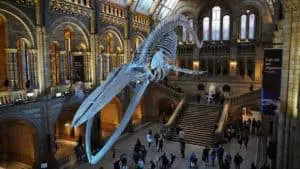The Callanish Stones to The Burren: Exploring Ireland’s Ancient Sacred Sites
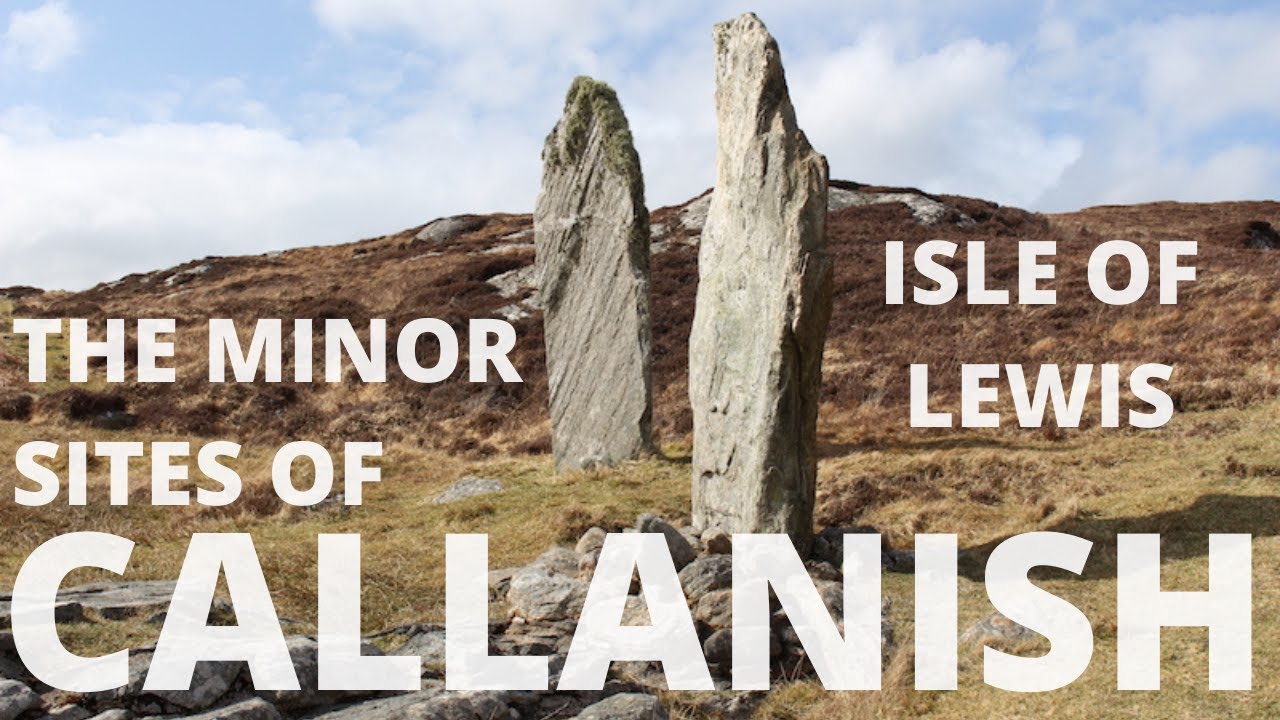
Updated On: April 24, 2024 by Eman Sameh
Spanning back thousands of years, our journey through Ireland’s prehistoric sanctuaries takes us from the mystical Callanish Stones of Scotland to the rugged Burren landscape in Ireland. At Callanish, located on the Isle of Lewis, we encounter a striking monument of ancient pillars that serve as silent witnesses to a bygone era. These megaliths, standing stern against the backdrop of the hills of Great Bernera, continue to captivate and incite wonder about the origins and purposes behind their existence. Moving on to the limestone expanses of The Burren, we find a vastly different terrain. This karst landscape in County Clare is not only rich in geological interests but also hosts a range of unique ecosystems and archaeological sites, revealing a tapestry of human history and natural evolution intertwined.
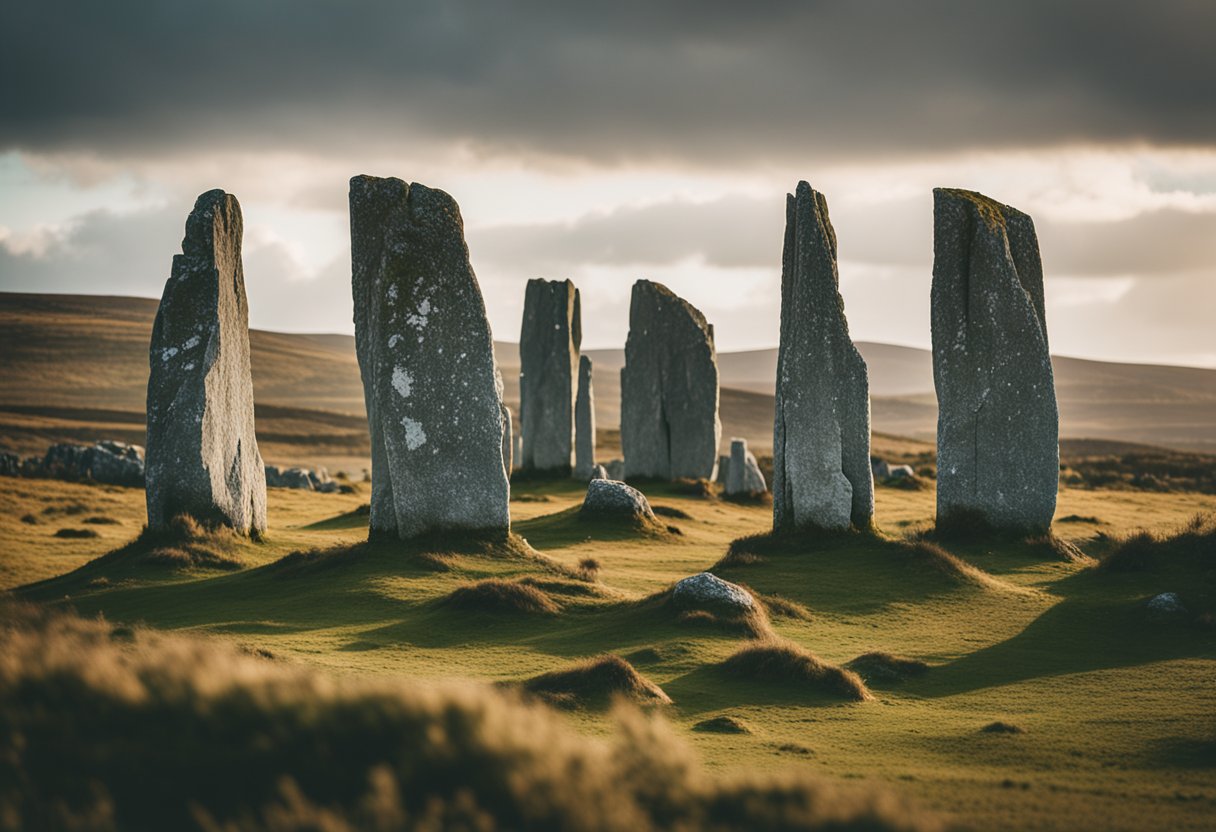
Within these ancient sites, our connection to the ancestors of the land is palpable. The Burren’s history is etched into its rocky surface, with evidence of human settlement dating back over 12,500 years. As custodians of these spaces, our understanding and appreciation of their significance grow with each new discovery. Through archaeological insights and conservation efforts, we not only unearth the stories these stones and earth harbour, but we also gain perspective on the cultural and ecological importance they hold in our modern world. They are not just relics of the past but living sanctuaries that stand testament to the resilience and ingenuity of our ancestors, as well as the durability of the natural world they inhabited.
Origins of The Callanish Stones
The Callanish Stones are a striking testament to the Neolithic era on the Isle of Lewis in the Outer Hebrides of Scotland, which predates even the more famous Stonehenge. Planted in the ground over 5,000 years ago, these megalithic monuments have compelled our generations, much as they did ancient communities.
Here are a few key points about the origins of these stones
- Erected during the Neolithic period: It’s widely accepted among archaeologists that the Callanish Stones were erected during this era, which marked a significant transition in human history from nomadic lifestyles to settled farming communities.
- Significance of their arrangement: The stones form a cruciform pattern with a central stone circle. This arrangement indicates their use as an ancient monument, possibly for rituals and ceremonies connected with astronomical events and the natural world.
- Intertwined with the local community: The area surrounding the stones has yielded evidence that suggests these stones were an active centre for prehistoric religious activity, and their presence reflects the community’s engagement with these ancient monuments.
- Materials and construction: The primary material is local Lewisian gneiss, known for its durability. The size and shape of the stones suggest that transporting and erecting them required a shared communal effort, highlighting the cooperation within Neolithic society.
While we can’t pinpoint the exact intentions of the Neolithic people who erected these stones, the Callanish Stones are awe-inspiring markers of human ingenuity and spirituality. Uncovering the full spectrum of their origins is an ongoing journey that continues to shape our understanding of these ancient monuments.
Landscape and Geology of The Burren
The Burren in County Clare, Ireland, is a remarkable region renowned for its distinct limestone pavements that stretch across the landscape. This naturally sculpted terrain features a myriad of grikes (deep fissures) and clints (isolated rocks) carved into the grey stone, unique to the karstic geological formation found here.
Amidst the limestone pavement, we often encounter glacial erratics, large boulders transported and deposited by retreating ice sheets during the last Ice Age. This testament to the area’s ancient history complements the underlying geology of the region, which hosts a variety of fossils, telling tales of marine life that existed millions of years ago.
In terms of flora, The Burren is a Special Area of Conservation due to its rare and diverse plant species. Some species here are typically found in alpine or Mediterranean environments, yet they thrive in this unique habitat. Our research delves into the interplay between the ancient, stony land and the life it supports.
The County Clare landscape’s beauty is stark and dramatic, which has not only caught the attention of geologists but has also become a place of intrigue for those of us interested in Ireland’s natural history. Despite its seemingly barren appearance, the Burren supports a flourishing ecosystem in the cracks of its rocks.
Many questioned how such a paradoxical landscape came to be. Through studying this karst topography, we’ve learned that the answer lies in the slow dissolution of soluble rocks such as the limestone here, which led to this rare and fascinating terrain. It’s a landscape that challenges our understanding of what makes a region fertile and full of life—a true natural sanctuary.
Discovering The Burren’s History
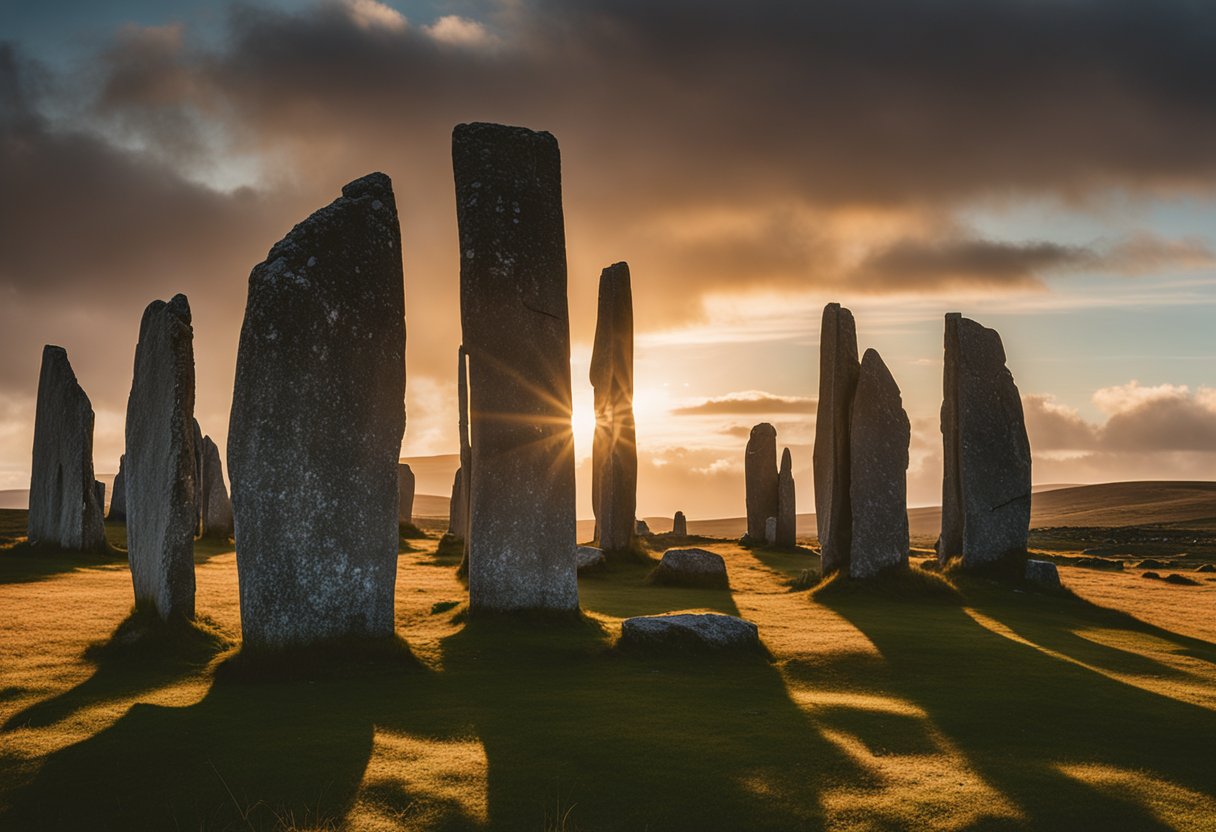
The Burren in County Clare represents a profound connection to Ireland’s historical narrative. Its prehistoric sites tell stories that span thousands of years. As we explore the region’s exceptional archaeological remains, we gain insight into the lives of our ancestors from the Neolithic period through the Iron Age.
Poulnabrone Portal Tomb
One of the most iconic landmarks within The Burren is the Poulnabrone Portal Tomb, a striking megalithic structure that has stood as a silent witness for millennia. Excavations at Poulnabrone have provided us with invaluable insights into Neolithic life. Radiocarbon dating indicates that the site was used for burial over 5,600 years ago. The archaeologists who carefully uncovered the tomb found human remains, along with personal items such as pottery and stone tools, attesting to the complex social and spiritual practices of the time.
Neolithic to Iron Age
Transitioning from the Neolithic period into the Bronze Age and later the Iron Age, Burren’s landscape continued to play a significant role in the lives of its inhabitants. The area’s numerous archaeological sites give us a glimpse into these distinct eras. The remnants found, including sophisticated tools and elaborate burials, reflect a continuing evolution of society and technological prowess over the centuries. The archaeological findings in The Burren allow us to construct a more complete picture of prehistoric life, informing us not just about the people’s mortality but also their innovation and adaptation over time.
Archaeological Insights
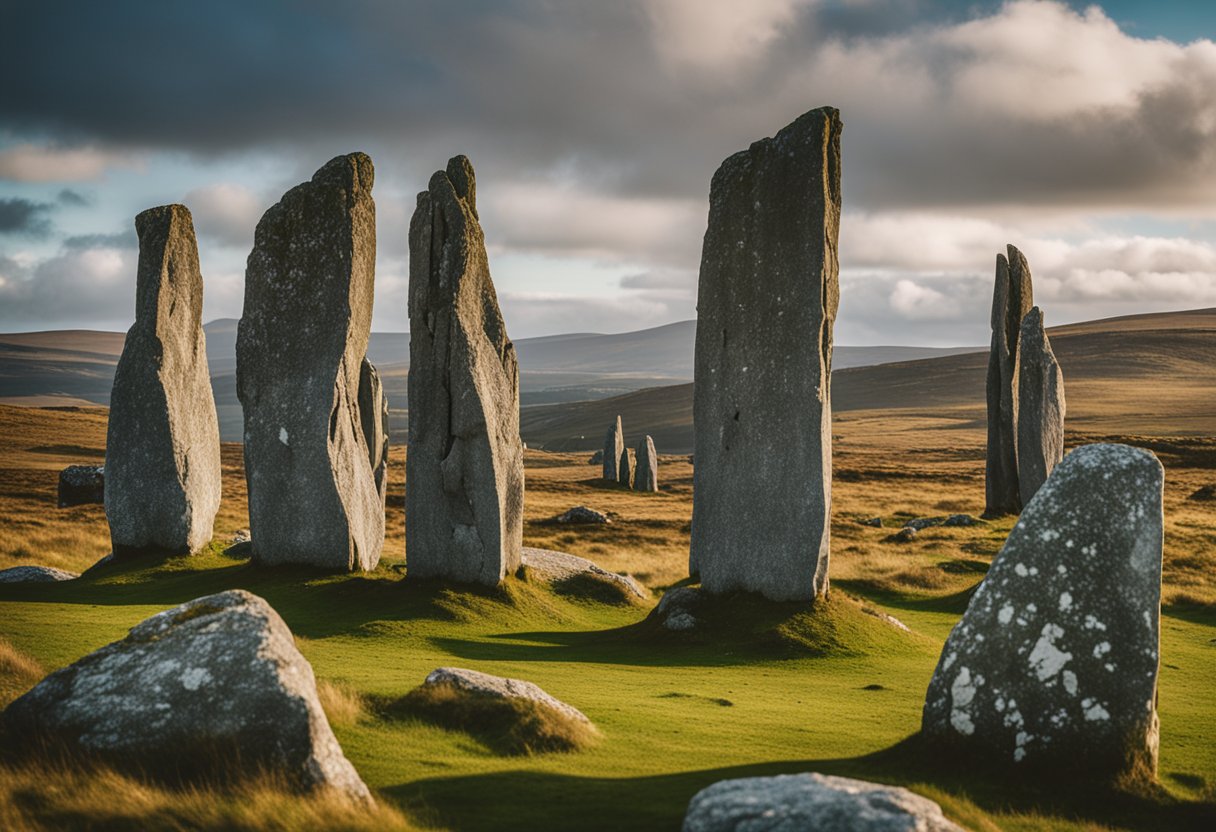
The Callanish Stones and The Burren represent monumental marvels within Ireland’s prehistoric landscape. At these ancient sites, each stone and artefact tells a story of our past.
The Callanish Stones stand tall on the Isle of Lewis as a testament to our ancestors’ celestial connections. Through excavations, we’ve gleaned that it functioned much like an ancient lunar observatory. Callanish researcher Margaret Curtis was pivotal in uncovering many of its secrets before her passing in 2022.
In contrast, The Burren in County Clare is a karst landscape where extensive archaeological evidence showcases a varied history of human activity. Here, radiocarbon dating of remains and pottery offers a timeline for habitation and use.
| Site | Significance |
|---|---|
| Callanish | Neolithic standing stones with astronomical alignment |
| Burren | Karst landscape with evidence of Iron Age farming and dolmen tombs |
Key finds, including bones, buried artefacts, and megalithic tombs such as the dolmen, solidify these locales as ceremonial, possibly even spiritual, gathering points. The portal tombs of The Burren provide significant insights into the rituals and beliefs of early inhabitants.
Our understanding of these prehistoric sanctuaries continues to evolve with ongoing studies. The preservation and careful analysis of what lies beneath our feet allow us to learn more about where we come from and our continuity as a people on these islands.
Cultural Significance
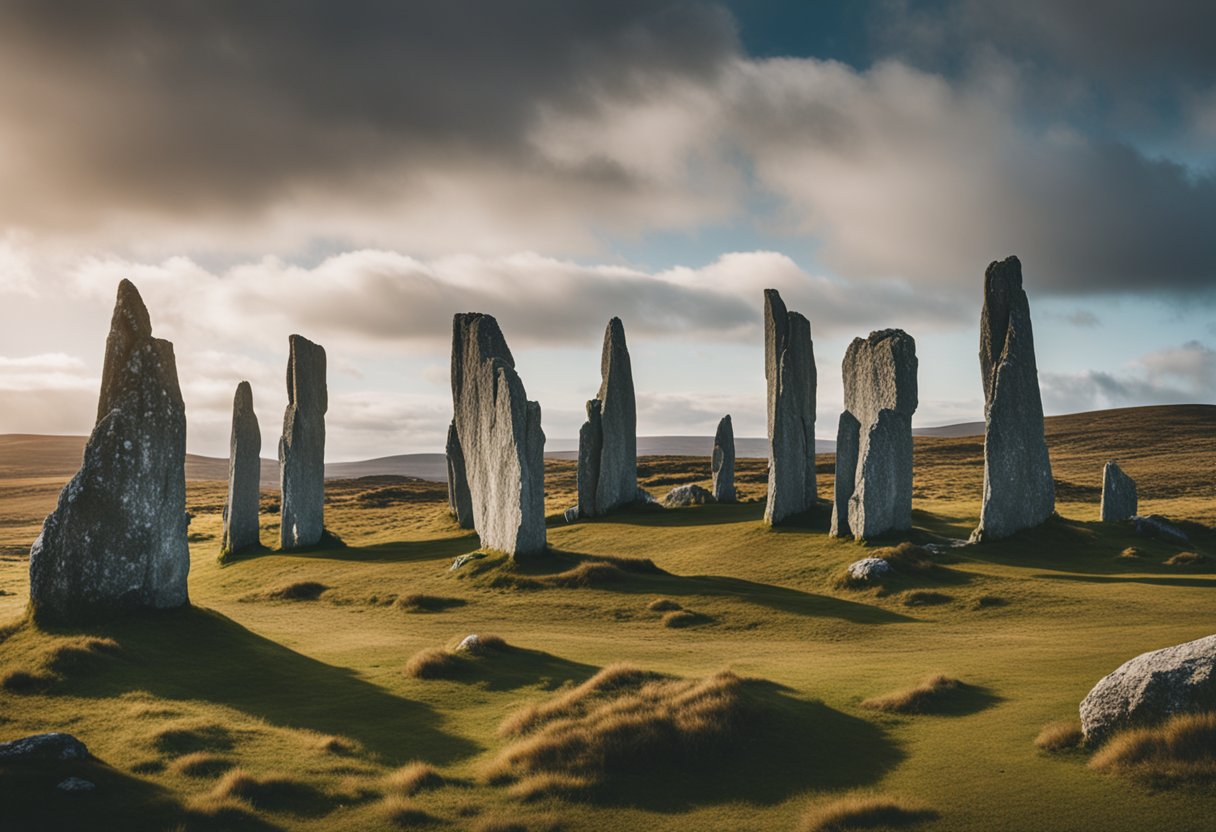
The Callanish Stones on the Isle of Lewis and The Burren in Ireland are profound markers of our prehistoric past, holding rich cultural significance that continues to captivate our community. In these settings, ancient monuments are silent witnesses to the complex rituals and beliefs of the people who erected them.
At the Callanish Stones, we find a striking collection of megaliths, thought to be connected to astronomical events and considered a place for ceremonial activities during the Bronze Age. Their location on the isle suggests the stones were central to the cultural and religious life of the inhabitants. Similarly, in The Burren, a karst landscape laden with artefacts, we uncover a living record of burial practices and territorial markers, echoing the spiritual and day-to-day existence of our ancestors.
| Location | Artefacts | Practices |
|---|---|---|
| Callanish | Standing stones | Rites of passage |
| The Burren | Dolmens, tombs | Burial ceremonies |
The Office of Public Works in Ireland conserves locations like The Burren, ensuring that they remain untouched for future generations to appreciate. Meanwhile, recognition by entities like UNESCO reinforces the global importance of these sanctuaries, acknowledging their value not only to Ireland but also to humanity’s collective heritage.
We understand these sites as more than mere attractions; they are a testament to the resilience of past communities, their alignment with the cosmos, and their artistic expressions. These ancient sanctuaries are cherished not only for the historical insight they provide but also for their ongoing cultural significance that we, as stewards of heritage, are committed to preserving.
The Burren’s Unique Ecosystem
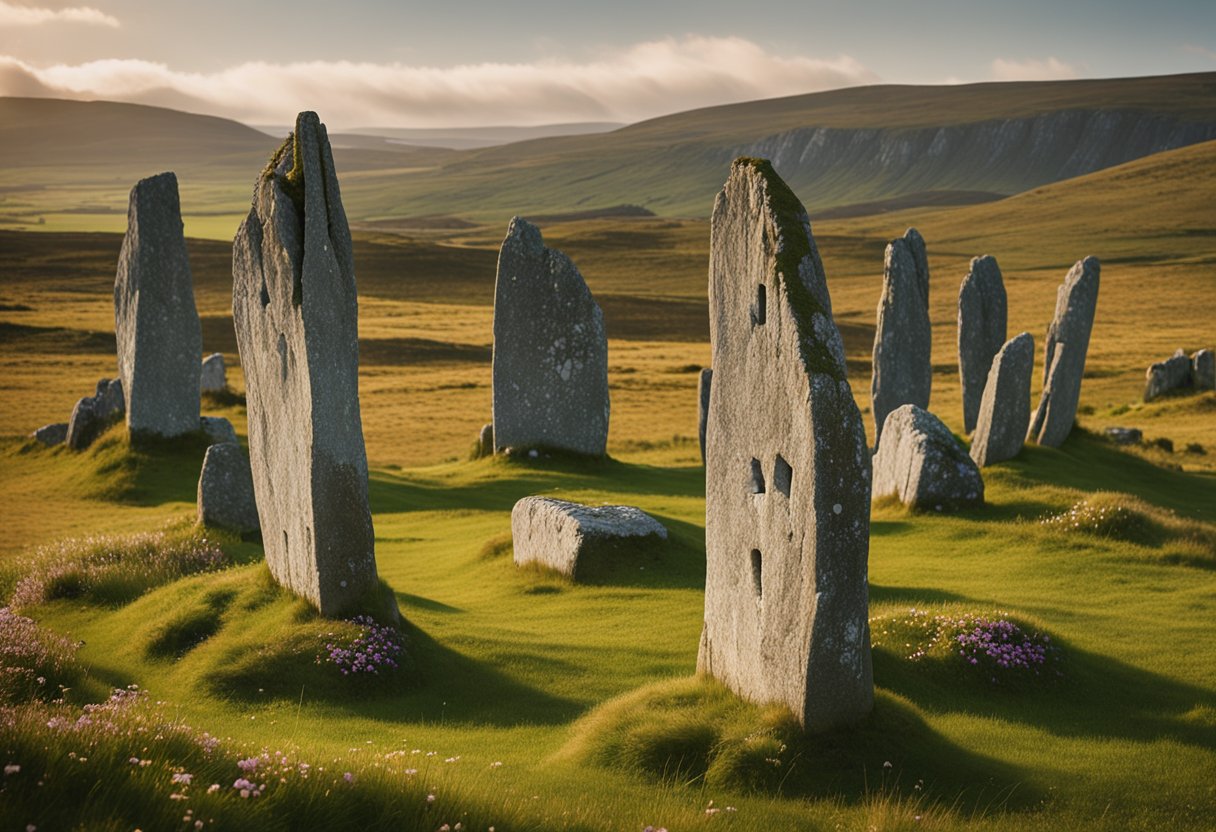
Nestled in County Clare, The Burren represents a remarkable intersection of history and biodiversity. We find its limestone pavement harbours a distinctive array of flora, including Arctic, Alpine, and Mediterranean species coexisting paradoxically. These plants thrive in the cracks and crevices, known as ‘grikes’, which provide microhabitats within the harsh environment.
Burren National Park, a key part of this ecosystem, is a Special Area of Conservation. This designation recognises the importance of the area’s diverse habitats, which range from rocky terrains to lush green woodlands. A series of nature trails have been developed to facilitate public appreciation while protecting its delicate ecology.
Flora: The Burren supports a variety of rare botanical species, some found nowhere else in Ireland:
- Mountain avens
- Orchids
- Gentians
The Burren is not just a sanctuary for plants; it supports a wealth of wildlife, including the endangered European pine marten and a host of bird species. Its rich ecological tapestry is constantly studied, providing insights into nature’s resilience and adaptability to varied climatic conditions.
Our understanding of The Burren’s unique ecosystem continues to evolve, much like the dynamic landscape itself. We consider it a privilege to witness such a seamless blend of natural history and conservation. The effort to maintain the balance between visitor access and habitat protection remains a priority, ensuring The Burren can be enjoyed for generations to come.
Tourism and Modern Interaction
Our visits to historic sites like the Callanish Stones and the Burren are not only a journey through time but also a testament to our continuous dialogue with the past. We find the Callanish Stones on the Isle of Lewis, a cruciform setting that is aligned with the lunar cycles, now a compelling destination for those drawn to its ancient mystery and neolithic craftsmanship.
The visitor centres at these locations provide insightful narratives and immerse tourists in an educational experience, sharing the significance of these prehistoric sanctuaries. At Callanish, the attention the stones have garnered has led to the establishment of a dedicated site for visitors to learn about the stones’ astronomical alignments and cultural relevance.
The Burren, famed for its unique karst landscape, attracts geology enthusiasts as well as those captivated by the Cliffs of Moher nearby. These towering cliffs offer a dramatic view that is both a natural wonder and a tourist hotspot. Here, our focus shifts to sustainability and preservation, ensuring that our interactions with these landscapes remain respectful and that their beauty is maintained for future generations.
- List of Tourism Highlights
- Callanish Stones Visitor Centre – Education and discovery
- The Burren – Unique geology and biodiversity
- Cliffs of Moher – Breathtaking views and coastal walks
Our role as promoters of these ancient sites is underscored by our commitment to share their stories without impacting their integrity. We hope that through tourism, the awe that these landscapes inspire will be the catalyst for their continued preservation. Engaging with these timeless reminders of the past, we not only witness history but become part of its ongoing narrative.
Conservation Efforts
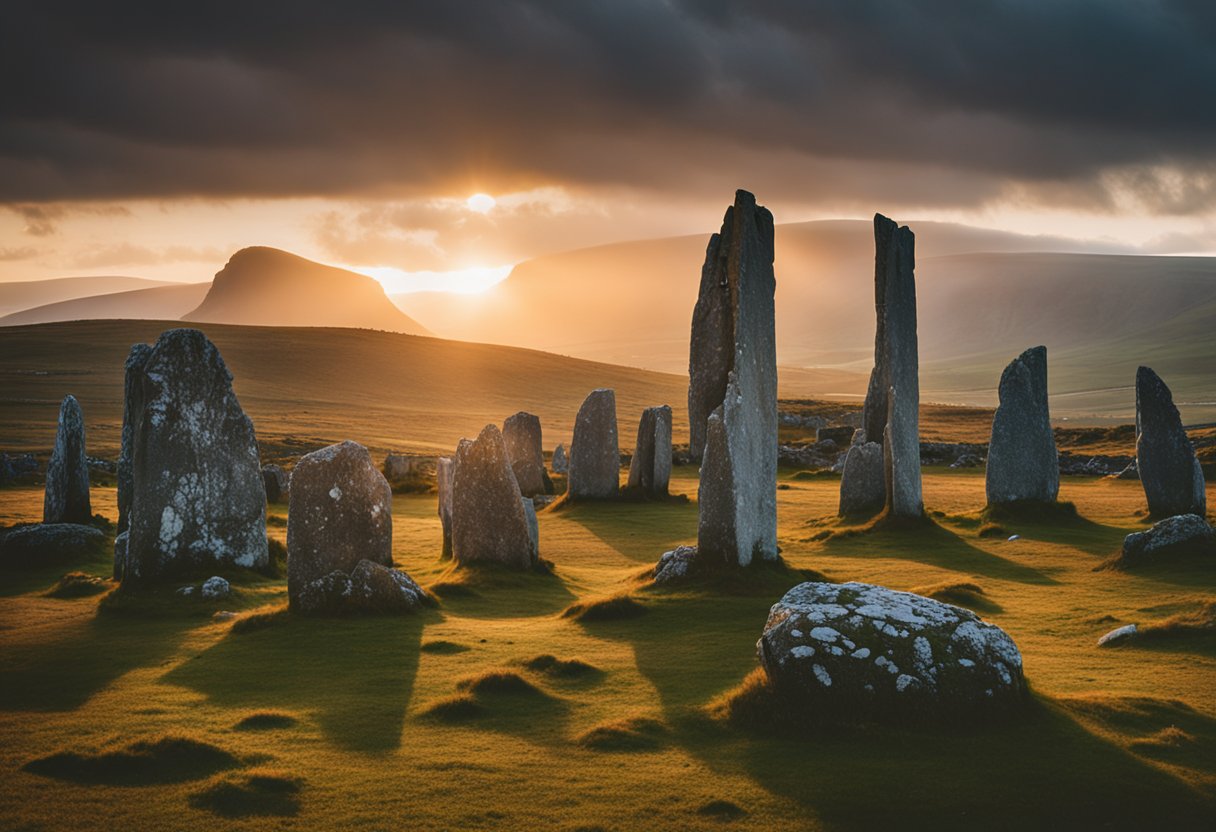
We’ve observed vital conservation initiatives in our dedication to protecting Ireland’s archaeological wonders, such as the Callanish Stones and The Burren. These efforts ensure the longevity and integrity of these precious prehistoric sanctuaries.
Safeguarding Archaeological Integrity
The Office of Public Works plays a crucial role in maintaining the structural stability of historical sites. In regions like The Burren, which is recognised as a UNESCO Global Geopark, the emphasis is on preserving the natural state of the monuments. For example, measures are taken to prevent the encroachment of vegetation on stone structures. Similar conservation practices extend to the Callanish Stones, where efforts are made to minimise the impact of erosion and human activities that could compromise the site’s archaeological integrity.
Environmental Protection
As a Special Area of Conservation, The Burren is subject to rigorous environmental protection. The delicate limestone pavements and unique flora require ongoing monitoring and careful management to ensure their preservation. Conservationists aim to balance the needs of the local wildlife with those of the visiting public. This management is designed not only to protect the Burren’s natural habitats but also to educate visitors about the importance of conservation in such ecologically sensitive areas.
Connecting to The Wider Landscape

The Callanish Stones and The Burren are gateways to understanding the intricate link between prehistoric structures and their surrounding landscapes. In the Western Isles of Scotland, the Callanish Stones stand on a low ridge, offering a panoramic view of the landscape, with Loch Roag and the hills of Great Bernera enhancing their mystical backdrop. Similarly, The Burren’s vast limestone plateau extends into Galway Bay, offering a sharp contrast to the Aran Islands that bear witness to the drama of the Atlantic coastline.
Our exploration reveals the stones’ alignment not only with each other but also with the prominent features of the land and sky. This connection suggests these ancient sanctuaries were designed to harmonise with, and perhaps to understand or celebrate, the wider world. The Callanish Stones link to the Callanish Stones website stands in their silent observatory roles, while The Burren’s rugged terrain, dotted with archaeological riches, echoes with stories from the past.
- Slieve Aughty Mountains rise in the distance, cradling The Burren and offering a contrasting lush green to the grey karst landscape.
- The coastline serves as a reminder of the natural forces that have shaped these sanctuaries over millennia.
We are reminded that these ancient, monumental creations were not isolated–they were central to the communities that built them and the environments they inhabited. Today, as we walk in the shadows of these stones, we are walking paths trodden for thousands of years, woven into the fabric of the land itself, connecting us with the wider landscape and its ongoing story.
Educational Resources and Research
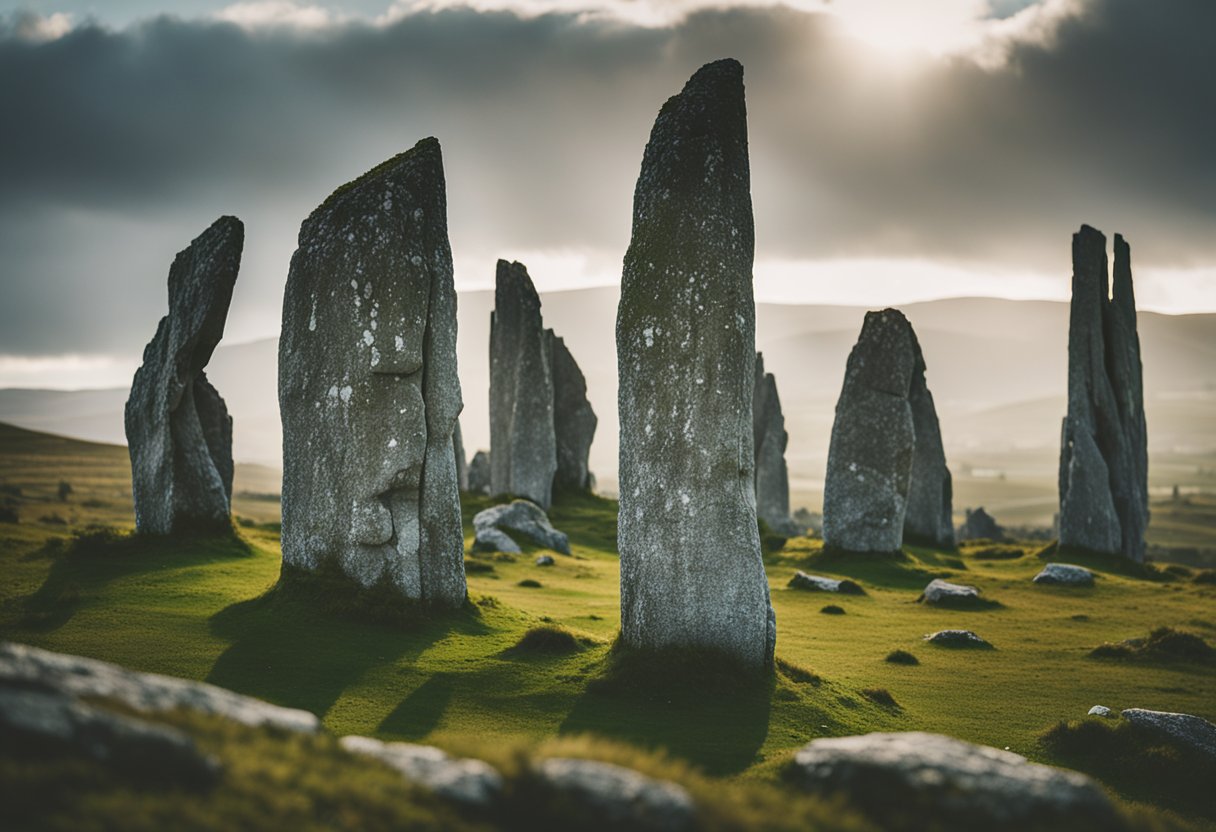
When delving into the rich prehistoric sanctuaries of Ireland, NUI Galway offers valuable research materials and educational resources, particularly for specialists and enthusiasts in archaeology. The university’s departments facilitate various studies on historic sites, emphasising archaeological monuments like the Callanish Stones and The Burren.
Students and academics can engage with the community through education-centric programmes. Various initiatives aim to bridge the gap between scholarly research and public knowledge. Educational resources such as field trips, seminars, and online repositories are curated to foster immersive learning experiences.
For those pursuing independent research, websites such as IrishCentral History provide accessible articles and features on Ireland’s profound historical landscapes. These platforms serve as a starting point for understanding the significance of such sites within the broader scope of Irish heritage.
Moreover, working with an archaeologist or participating in archaeological digs can offer firsthand insight into the processes behind excavating and preserving these ancient structures. This practical exposure is crucial for a comprehensive grasp of the field.
To summarise, a plethora of educational resources is available for those interested in researching Ireland’s prehistoric sanctuaries. Whether it be through formal education at institutions like NUI Galway, or community-centric programmes and accessible online content, the pursuit of knowledge in this area remains robust and rewarding.
Nearby Towns and Attractions

We find that The Burren in Ireland is surrounded by quaint towns and natural attractions, each offering unique experiences.
Ballyvaughan, a charming village located on the edge of The Burren, serves as an ideal starting point for exploring the region. The Burren and Cliffs of Moher Geopark offer visitors insights into the area’s geological significance.
Lisdoonvarna is renowned for its mineral springs, and the historic spa town is also famous for its annual matchmaking festival.
| Town | Attraction |
|---|---|
| Doolin | Gateway to the Aran Islands |
| Corofin | Access to Mullaghmore |
Visitors to Fanore can relax on the sandy Fanore Beach, which offers Atlantic views and surfing opportunities.
For those seeking to immerse themselves in nature, the Carron Loop Walk offers scenic vistas across The Burren’s limestone pavement. Lahinch adds coastal excitement with its popular beach and vibrant surfing scene.
We cannot forget Mullaghmore, a spectacular mountain providing a challenging hike with rewarding panoramas.
Finally, those intrigued by Ireland’s ancient sanctuaries will find Corofin intriguing; it serves as another gateway to the wonders of The Burren’s prehistoric landscape.
Our advice to visitors is to embrace these towns and attractions at a leisurely pace to truly appreciate the unique character of each.
Frequently Asked Questions
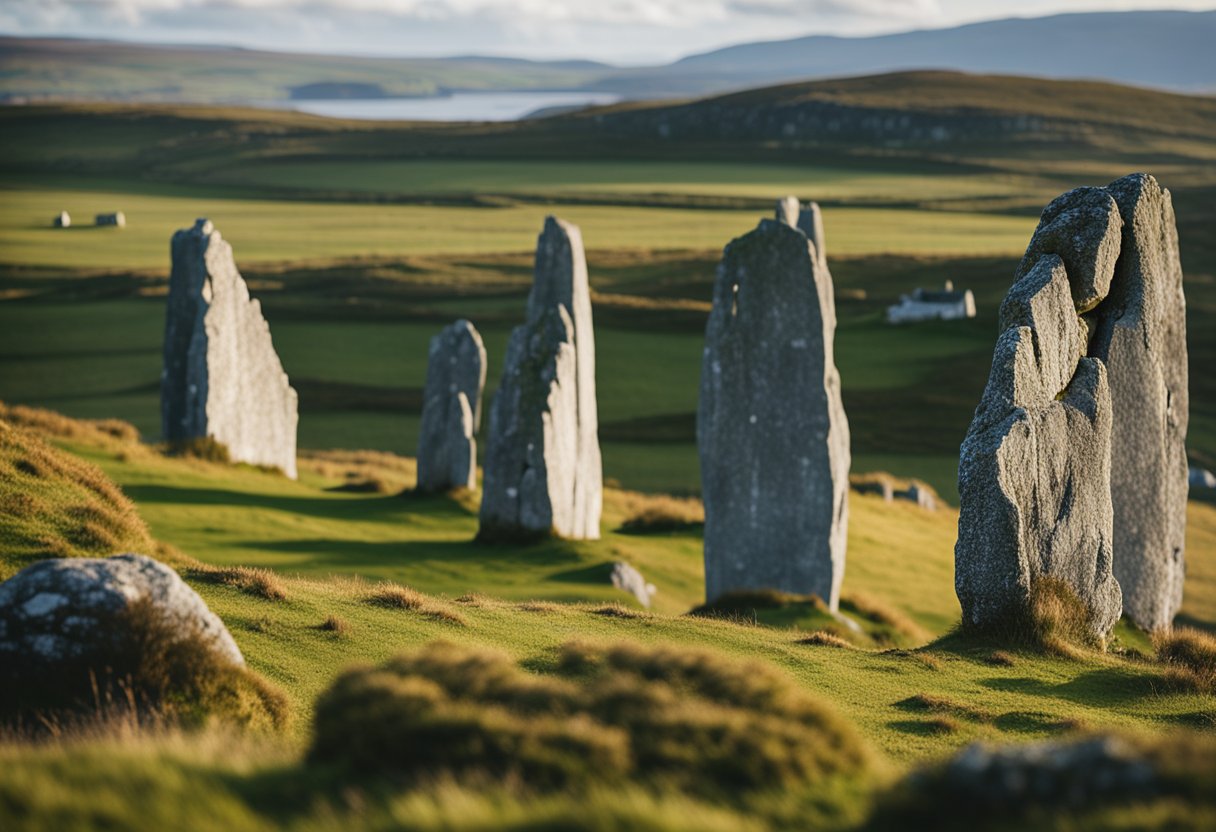
In this section, we address some of the most common inquiries about two of the British Isles’ remarkable prehistoric sites. We’ll uncover the tales of the Callanish Stones and The Burren’s historical roots, as well as provide practical information for visitors.
What are the myths surrounding the Callanish Stones?
Legends say the Callanish Stones were petrified giants who refused to convert to Christianity. Druidic sacrifices and astronomical alignments are also among the tales tied to these enigmatic stones.
Can you detail the historical significance of the Calanais Standing Stones?
The Calanais Standing Stones are an impressive testament to Neolithic engineering. They likely served as a focal point for ritual activity and may have been used to mark astronomical events.
What are the travel options for reaching the Callanish Stones?
To visit the Stones, one can travel to the Isle of Lewis by ferry or plane. Rental cars or guided tours are available on the island to reach the stone circle.
How do the Callanish Stones compare to Stonehenge?
While both are prehistoric stone circles, the Callanish Stones are older than Stonehenge and are uniquely arranged in a cross shape, unlike Stonehenge’s circular layout.
Who were the builders of the Callanish Stones, and what purpose did they serve?
It is believed that the community of farmers erected these stones around 3000 BCE. They may have served as a centre for ritual activity or were linked to astronomical observations.
To what depth are the Callanish Stones embedded into the ground?
The Callanish Stones are buried to various depths, with some being up to one metre deep, to ensure their stability over millennia.


